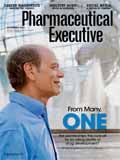The Power of Observation
Observational studies present a compelling real-world corollary to the classic randomized clinical trial.
As the name implies, in observational studies one 'observes.' The choice of therapy is determined by the patient and her physician rather than protocol, and, because participation does not impact which treatment a patient receives, these studies can enroll a greater diversity of patients. As such, these studies are generally viewed as more 'real-world' than classic clinical trials. As the importance of these studies have grown, so have efforts to develop best practice guidelines in the design, implementation, and evaluation of these studies, so that high-quality evidence can be used for decision-making among regulators, payers, physicians, and patients.

Richard Gliklich, MD
Real World Welcome
In recent years, regulators and payers have led the push toward observational studies. Regulators are demanding it as a requirement following approval. Their requests are mainly driven by the need to better understand the impact of the product in the real world, especially the safety profiles of medications and devices as they are actually used, in a broad range of patients. With the passing of the Food and Drug Administration Amendments Act (FDAAA) of 2007, the FDA was authorized to require post-marketing studies or clinical trials at the time of approval, or after approval if new safety information emerges. Before requiring a post-marketing clinical trial, however, FDA must first determine that a post-marketing study will not be sufficient to address the safety issue of concern. FDAAA also introduced Risk Evaluation and Mitigation Strategies (REMS) for monitoring risk post-approval. Elements to assure safe use (ETASU), a part of REMS, may require a registry in which every patient taking the medication must be included. FDAAA also introduced the Sentinel Initiative, a database system that actively gathers safety information on marketed products, and consists of different data sources, including EHR systems, claims databases, and patient registries. Sentinel represents the first major step in changing the FDA's approach to post-market surveillance, from a passive system to a more active one; observational data is a vital element of this new system.
In 2010, FDA asked the Institute of Medicine (IOM) to evaluate the scientific and ethical issues involved in conducting studies on the safety of approved drugs. The IOM committee was asked to identify the strengths and weaknesses of various approaches, including observational studies, patient registries, patient-level data meta-analyses, and randomized controlled trials (RCT). The IOM's July 2010 report found that an RCT should only be conducted to provide additional evidence if a "responsible policy decision cannot be made based either on the existing evidence or on evidence from new observational studies." The IOM findings demonstrate that observational studies are increasingly becoming recognized as a preferred tool to monitor products for real-world data on safety and effectiveness.
With the American Recovery and Reinvestment Act (ARRA) of 2009, regulators in the US also began to focus on comparative- and cost-effectiveness data, hoping that more effective medicines would both improve the quality of care, as well as reduce healthcare costs. ARRA launched comparative effectiveness research (CER) into the spotlight by setting aside $1 billion for conducting CER, including observational studies. In 2010, the Patient Protection and Affordable Care Act established the Patient-Centered Outcomes Research Institute (PCORI), an independent organization responsible for commissioning comparative effectiveness research, including observational studies. As more of these studies are being required to meet safety and effectiveness needs, the government has developed different initiatives to provide best practice guides and to monitor and track the studies themselves. One example of a government-sponsored initiative is the US Health and Human Services Agency for Healthcare Research and Quality (AHRQ) guide, "Registries for Evaluating Patient Outcomes: A User's Guide."
The European Medicines Agency (EMA) has conducted similar initiatives, like the European Network of Centres for Pharmacoepidemiology and Pharmacovigilance (ENCePP), a project aimed at strengthening post-market product monitoring. The project's goals include facilitating multicenter, independent, post-authorization safety studies (PASS) and studies focusing on a lack of efficacy. In 2010, ENCePP introduced the Code of Conduct for Independence and Transparency and the Checklist of Methodological Standards for ENCePP Study Protocols that were designed with an emphasis on non-interventional post-authorization studies.
The EMA also developed the PROTECT-EU project (Pharmacoepidemiological Research on Outcomes of Therapeutics by a European ConsorTium), a multinational collaboration of public, private, and academic organizations that together develop innovative methods in pharmacoepidemiology and pharmacovigilance. One of the objectives includes developing "methods for continuous benefit/risk monitoring of medicines, by integrating data on benefits and risks from clinical trials, observational studies, and spontaneous reports."
Like regulators, payers have also been demanding more real-world data for determining coverage. Many payers are already seeking observational data about the clinical and economic value of a product, as a prerequisite to a formulary position or a specific level of reimbursement. In some cases, this can create a catch-22 as payers seek real-world data before allowing the product to effectively gain access to the market. This quandary can be addressed to some extent using preapproval or data from other markets to perform modeling. When the question is not addressable with existing evidence, some entities will consider a limited coverage model while more evidence is accumulating. Both the US Centers for Medicare and Medicaid Services (CMS) and the UK National Institute for Health and Clinical Excellence (NICE) have policies based on this concept. Coverage 'with evidence development,' 'only in research,' and similar models in the private sector offer an opportunity to prove effectiveness or value over time, although they are used less frequently than one might imagine.
Manufacturers
Manufacturers are becoming more dependent on using observational studies to meet new requirements. Because observational studies can be used to meet many different needs, they are being implemented by many different departments and functions within life sciences organizations, including epidemiology; safety and risk management; health economics and outcomes research; evidence-based medicine; regulatory affairs; medical affairs; clinical operations; market access; and health policy. The growing importance and uses of these studies necessitates a cross-functional approach to design and implementation. Manufacturers are also now approaching real-world observational studies as a key aspect of product development.
For industry, observational studies are not only crucial for meeting post-marketing commitments and receiving initial reimbursement, but for also expanding market access, gaining a competitive advantage, and understanding the history of disease. Researchers can use observational studies to understand the real-world benefits of different dosing, adherence to a medication, and sometimes (with a compliant design) even outcomes from off-label use, since more than 50 percent of drugs and devices are used off-label in many disease areas.
Like the government initiatives mentioned above, industry and issues-based groups are developing best practice principles for conducting observational studies, including STROBE (STrengthening the Reporting of OBservational studies in Epidemiology), one of the earliest attempts to promote guidelines for observational research, and the GRACE Principles (Good ReseArch for Comparative Effectiveness). STROBE, although widely known, addresses reporting, but not the quality of these studies. The GRACE Principles, sponsored with seed funding from the National Pharmaceutical Council and involving contributors from academia, government, and industry, provide high-level guidance to decision-makers to help them evaluate the quality of observational studies around comparative effectiveness.
Providers and Patients
Healthcare providers and patients are naturally concerned with the effectiveness and safety of medical products, and without their participation, observational studies wouldn't work. Providers are beginning to view these studies as a way to make evidence-based decisions on what to prescribe and to whom. Patients can use the data to make informed decisions about their own medical treatment.
Healthcare reform efforts in the US have put additional pressure not only on manufacturers but also on providers. They too are important pieces in the puzzle of how to improve care and reduce healthcare costs. Providers are being encouraged to participate in registries and other studies to help create an evidence-based, outcomes-focused system of care. These programs occur at the local, regional, and national level across a wide range of disease states, and are funded at different levels ranging from the individual hospital or practice to national medical associations.
The next wave of change may come from organized patients. Increasingly, disease-focused patient associations have organized their own programs to better understand the natural history of disease and the impact of new therapies. Organizations such as the Cystic Fibrosis Foundation have pioneered the role of the patient organization in the research enterprise, and many other organizations are taking notice and developing their own infrastructures for registries and other studies.
Over time, multiple stakeholders will converge and collaborate around these programs to both reach critical mass and reduce duplication of effort. Collaboratively building or leveraging existing networks of information will be an important direction for all stakeholders as the need for, and benefits of, real-world studies increases. For example, manufacturers are already leveraging certain registries managed for rare-disease-focused patient organizations or learning to partner with medical associations to meet common goals. And, different agencies of the US government are working with organizations such as the American Academy of Ophthalmology and Outcome Sciences to leverage new and existing registries from purposes such as safety assessment of intraocular lens implants to comparative effectiveness of glaucoma treatments.
Richard Gliklich, MD, is President and CEO of Outcome. He can be reached at richg@outcome.com

Addressing Disparities in Psoriasis Trials: Takeda's Strategies for Inclusivity in Clinical Research
April 14th 2025LaShell Robinson, Head of Global Feasibility and Trial Equity at Takeda, speaks about the company's strategies to engage patients in underrepresented populations in its phase III psoriasis trials.
Key Findings of the NIAGARA and HIMALAYA Trials
November 8th 2024In this episode of the Pharmaceutical Executive podcast, Shubh Goel, head of immuno-oncology, gastrointestinal tumors, US oncology business unit, AstraZeneca, discusses the findings of the NIAGARA trial in bladder cancer and the significance of the five-year overall survival data from the HIMALAYA trial, particularly the long-term efficacy of the STRIDE regimen for unresectable liver cancer.
Expanding Immune Response Testing to Support Vaccine Development
April 22nd 2025Nigel McCracken, chief operating officer, Virax Biolabs, discusses the expansion of its ViraxImmune platform into areas such as transplant monitoring, vaccine efficacy, latent virus reactivation, and CAR T cell therapy.